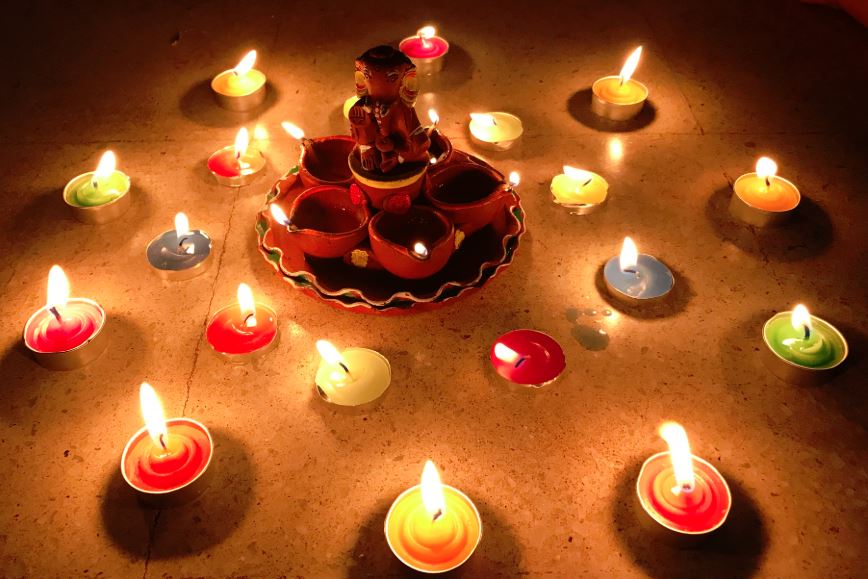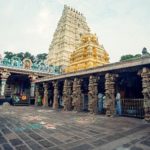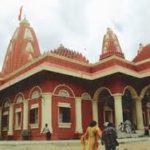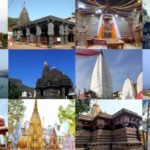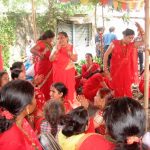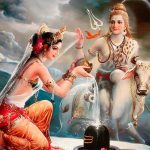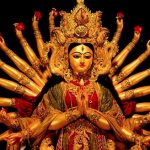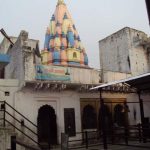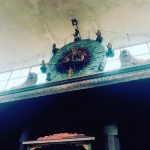Diwali is celebrated across India. It is also the most awaited festival in the Hindu Calendar. It is probably the most famous Hindu Festival across the world.
The Festival of Lights
Diwali, or to give it its Sanskrit name Deepavali, means an arrangement or a row of lights. It celebrates the victory of good over evil by driving away darkness with lights. People light earthenware oil lamps and display them in rows on this occasion.
Diwali History
Puranas like the Skanda Purana and Padma Purana mention Diwali. Meanwhile, some historians think this festival may have started as a harvest festival, as some texts refer to the lighting of lamps as symbolizing the energy of the Sun. King Harshavardhana also refers to Diwali in his play, Nagananda. In this Seventh Century Sanskrit play, he refers to the festival as Deepapratipadotsava.
Diwali also finds mention in the travel records of famous travellers like Al Biruni and Niccolo Di Conti. Records of the Mughal Empire and British Colonial records also refer to this celebration of lights.
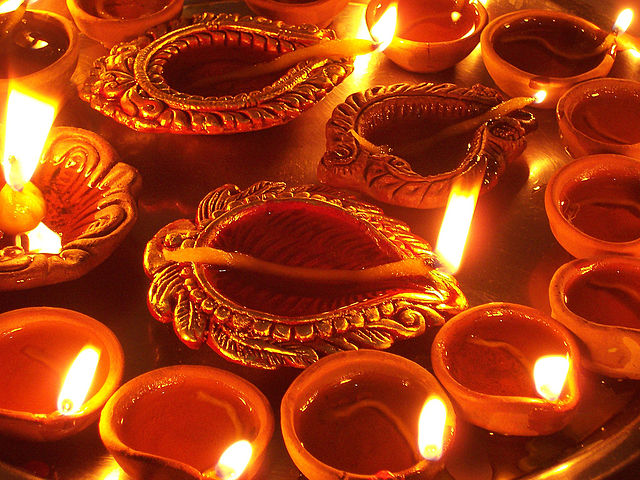
Diwali and Firecrackers
The custom of bursting firecrackers on Diwali is a relatively new practice. It may have started in the early part of the twentieth century. It led to the growth of a huge firecracker industry in the small town of Sivakasi in Tamilnadu. While it resulted in some economic growth in the region, the stigma of child labour used in the fireworks factories has led to negative publicity. In recent years many children have sworn off bursting firecrackers during Diwali, in sympathy with their peers who work in these factories due to economic compulsions.
Tales and Legends of Diwali
Diwali is not a regional festival. The celebrations occur across the country. There are numerous legends associated with Deepavali.
King Bali and Vamana
King Mahabali was the ruler of all the three worlds. He was an Asura who had conquered Earth and Heaven. Aditi, the mother of the Devas prayed to Lord Vishnu to help her son, Indra, so Vishnu was born as her son. He was a dwarf – Vamana. Vamana went to Mahabali and begged for three paces of land. He then grew in size as Trivikarma and measured all of Mahabali’s realm with two places. For the third pace, he placed his foot on the humbled Bali’s head, blessed him and told him to rule the nether world or Patala Loka. Mahabali was sent to rule Patala Loka during the time of Diwali.
Lord Rama
Sri Rama returned from his 14-year exile on the day of Diwali, with his wife Sita and his brother Lakshmana, along with Hanuman. The people of Ayodhya joyfully celebrated his return by lighting numerous clay lamps to dispel the darkness of that new moon day. So, the tradition of lighting lamps during Diwali still continues.
The Pandavas
The Pandavas of the Mahabharata also returned from exile on the Amavasya or New Moon day of the month of Kartik. The same day that Rama returned to Ayodhya.
Lord Krishna and Narakasura
Narakasura was an asura who had conquered the heavens and displaced Indra. He was spreading a reign of tenor and had captured and imprisoned several kings and thousands of young women. Lord Krishna challenged Narakasura and, in the battle, killed him. Narakasura asked that the world should celebrate his death at the hands of Sri Krishna. So, Diwali is also celebrated as Naraka Chathurthi
Dhanvantari
Dhanvaatari is an avatar of Vishnu, he is the God of Medicine. Lord Dhanvantari emerged from the Milky Ocean bearing a pot of Amrita on Trayodashi (13th day), the day before Naraka Chaturthi. So, this day is Dhanvantari Jayanti
Mahalakshmi
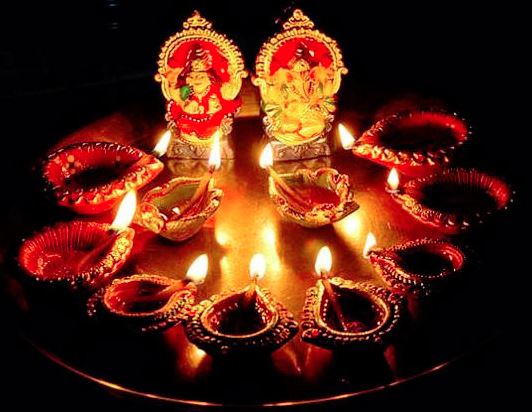
Mahalakshmi is the Goddess of wealth. She emerged from the Milky Ocean on the same day as Lord Dhanvantari. So, North Indians celebrate it as Danteras, the day of wealth and prosperity. Moreover, businessmen close their accounts and open their new books on Diwali.
Deepavali Celebration
Besides Hindus, Jains, Sikhs, and Buddhists also celebrate Diwali.
Jains celebrate Diwali as the day when Sri Mahavira attained Nirvana. In fact, Jain New Year starts on the day after Diwali. Sikhs celebrate it as the day their sixth guru, Guru Hargobind Singh, was freed from prison. Some Buddhists also celebrate Diwali.
The Sixth Sikh Guru, Guru Hargobind Singh, escaped from the Gwalior Fort prison and came to the Golden Temple at Amritsar on Diwali. So, on Diwali, The Golden Temple is decorated with lights, to mark this occasion. Significantly, the foundation for the Golden Temple was laid on a Diwali day.
In some regions of India, Diwali is a harvest festival. In the western states of India, Diwali comes during the harvest time of the Kharif crop. So, in villages, people worship Mahalakshmi to bless them with prosperity. They prepare sweets using the poha made from the freshly harvested rice.
The Festivities
The preparations for the festivities begin with the cleaning of homes. Then people shop for new dresses, sweets, and firecrackers. Families prepare sweets and savouries at home, as a special offering to Goddess Lakshmi, the Deity of Prosperity. The Elephant God Ganesh, the God of Good Fortune, is also worshipped on Diwali.
The clothes worn during Diwali are colourful and grand. Men and women, as well as children, love to flaunt beautiful ethnic wear on this day.
During Diwali, the streets are bright with lights from the houses. In each home women and children light numerous earthenware oil lamps, inside and outside. These lights are the main hallmark of this festival, as the name signifies. It symbolizes the banishing of darkness and evil from life. Women decorate their homes with Rangoli. These are beautiful patterns drawn on the floor using rice flour or a synthetic white powder mixed with different colours.
Families and friends gather together to celebrate this festival. Along with sweets, the older generation loves exchanging stories of the Diwali celebrations when they were children. It is a time of gaiety and fun, this festival does not involve any elaborate pujas or vrats. Children love this festival, it allows them full freedom to have fun with other kids, enjoy firework displays, and savour all the Diwali goodies.
The five-day festivities begin with Dhanteras.
Dhanteras
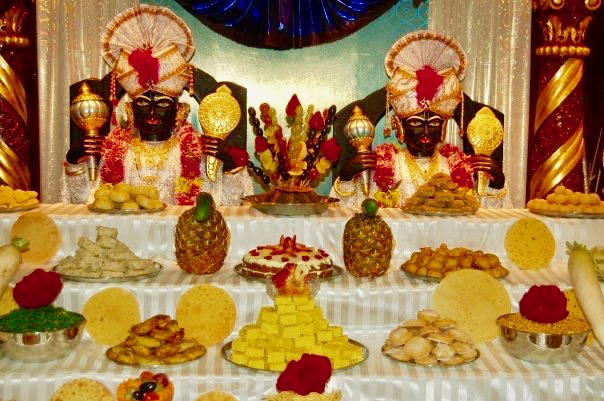
While the South celebrates Diwali as a one-day festival, in the North, it is a four to five -day celebration. It begins on the thirteenth day of Krishna Paksha (dark phase of the moon). This day is Dhanteras. It is also known as Dhanvantari Jayanti.
Narak Chaturthi or South Indian Deepavali
This is the fourteenth day of Krishna Paksha in Kartika Masa. On this day, North Indians celebrate Choti Diwali while in the South, this is the proper Diwali. In the South people have oil baths early in the morning, wear new clothes, light lamps, burst firecrackers, visit relatives, and exchange sweets and greetings. It is a day of celebrations and feasts.
Diwali
For North Indians, the New Moon Day or Amavasya is Diwali as Rama returned to Ayodhya on this day. They celebrate this day by wearing new clothes, lighting clay lamps, bursting firecrackers, and getting together with family and friends They also perform Lakshmi Puja on this day. Hindus in West Bengal celebrate this day with Kali Puja.
Annakut
Day four is Annakut or Govardhan Puja. This day commemorates Krishna lifting the Govardhana Parvata and sheltering the Gopas from the torrential rains sent down by Indra. On this day, after the Kartika masa Amavasya, the Gopas worshipped the Govardhana Hill. Annakut continues this tradition.
Bhai Duj
In some regions, the fifth day is a special day when brothers visit their married sisters. Yama, the Lord of Death visited his sister Yamuna (the river) on this day. Some also celebrate it as the day Krishna visited Subhadra, his sister, after defeating Narakasura.
Diwali Outside India
As with many other major festivals, Diwali too has crossed borders. It is celebrated in other countries with a sizable Indian population. Diwali is now a well-known festival in countries like the US, UK, Australia, Canada, etc. It is even an official holiday in some countries besides India, like Pakistan, Sri Lanka, Nepal, Singapore, Malaysia, Trinidad & Tobago, Fiji, and Myanmar.
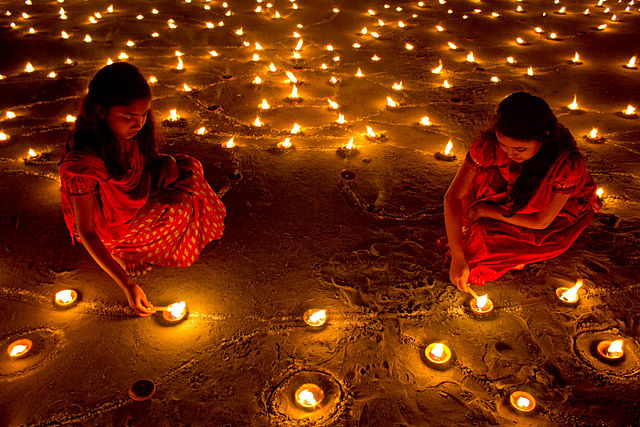
On the day of Diwali, even cross-border tensions ease. Soldiers stationed on either side of the India-Pakistan border meet and greet, and exchange sweets.
The biggest Diwali celebrations outside India occur in Leicester, England, and in Melbourne, Australia. Huge firework displays are a part of the celebrations, and thousands of people take part in the festivities.
Diwali Festival Significance
Deepavali, whether celebrated for one day or over five days, is an important holiday for Hindus. It brings together communities in celebration, erasing all divisions of caste or creed. Diwali celebrations now happen across the world. This festival of lamps illuminate houses and the minds of the people who celebrate it. It helps them forget all their worries and join together in a day of joy and renewed hope for a brighter future.




